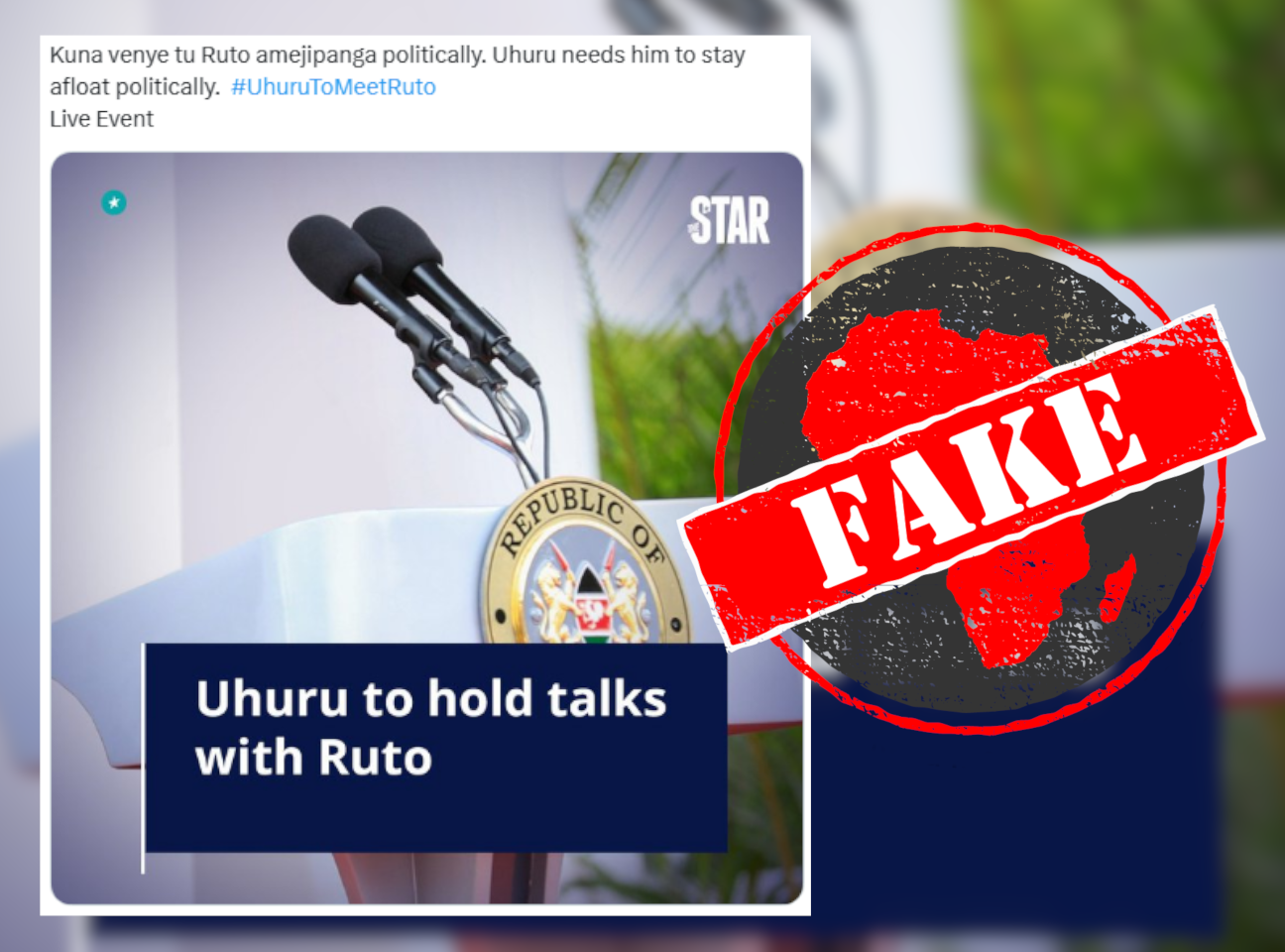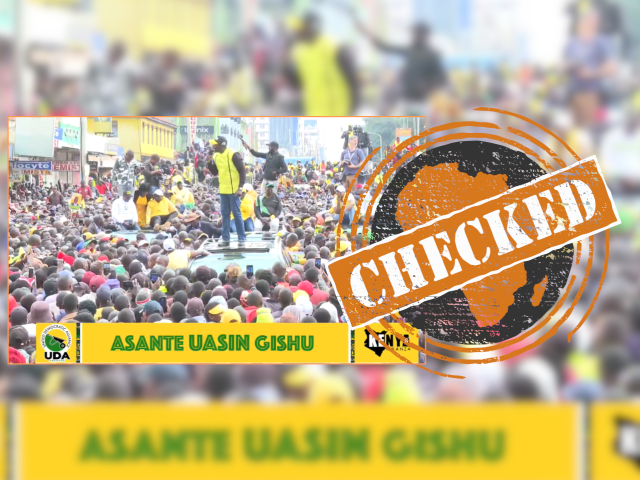IN SHORT: A photo and doctored graphics have been circulating on social media in Kenya, claiming that president William Ruto will meet his predecessor, Uhuru Kenyatta. None of the media houses published the graphics attributed to them, and the photo of Kenyatta and Ruto was edited and flipped.
On 26 March 2024, Kenyan deputy president Rigathi Gachagua gave a television interview in which he apologised to Ngina Kenyatta, the mother of former president Uhuru Kenyatta.
The apology made headlines in Kenya because Gachagua and president William Ruto, Kenyatta’s successor, had bitterly fought the Kenyattas on their way to power in August 2022.
The attacks on the Kenyattas continued on the day Gachagua and Ruto were sworn in. They escalated when a mob attacked and looted the Kenyatta family property on the outskirts of the Kenyan capital, Nairobi. Gachagua previously told Kenyatta to stop criticising the Ruto administration.
Days after Gachagua’s apology made headlines, social media posts emerged claiming that Ruto was scheduled to meet Kenyatta. These posts trended on X, formerly Twitter, on 28 March under the hashtag #UhurutoMeetRuto.
The posts included a photo of Ruto and Kenyatta supposedly in a meeting.
They were followed by graphics attributed to Kenyan news outlets the Star, Tuko, the Standard, Kenyans.co.ke, Citizen Digital, People Daily and Nation Africa.
The graphics were posted here, here, here, here, here, here, here, here, here, here, here, here, here, here, here and here.
While Kenyatta has a house next to Ruto’s official residence in Nairobi, the widely shared reports of an upcoming meeting created a picture of a public rapprochement between the two leaders.
But is the image showing them in a meeting authentic? We checked.

Clues: Flag and protocol
The image of Ruto and Uhuru in a meeting shows two flags. The Kenyan flag is on Ruto’s side, but the flag next to Kenyatta is not Kenyan, although there are two miniature Kenyan flags on the table.
Something else is strange: Kenyatta is to Ruto’s left, against protocol where the guest sits to the host’s right.
A reverse image search on Google Lens matched the image to a photo taken on 13 November 2023 of Ruto at a meeting with Sudanese leader Abdel-Fattah al Burhan.
Ruto posted the photo on X and Facebook, and it was widely circulated online.
Kenyatta’s face has been superimposed on Burhan’s body, and the photo flipped.
Fake graphics
The graphics attributed to media houses were also fake. Media houses usually publish news graphics on their social media pages.
We searched the social media pages of the news agencies to which the graphics were attributed, but came up empty.
Nation Africa’s managing editor for audience and engagement, Oliver Mathenge, told Africa Check that the graphic was fake. “Please be advised that this card doing rounds on social media is fake,” the media house wrote on X.
Njeri Ngugi, an editor at Citizen Digital, also told Africa Check: “We marked this as fake. This is not from us.”
Michael Oruko, Tuko’s news editor in charge of special reports, also disowned the post. “No, we didn't publish this. Our picture posts have standard templates … with unique red themes on the borders,” he said.
“No, this isn't ours. It’s fake … ” Francis Mureithi, the Star’s digital editor, told Africa Check.
Republish our content for free
For publishers: what to do if your post is rated false
A fact-checker has rated your Facebook or Instagram post as “false”, “altered”, “partly false” or “missing context”. This could have serious consequences. What do you do?
Click on our guide for the steps you should follow.
Publishers guideAfrica Check teams up with Facebook
Africa Check is a partner in Meta's third-party fact-checking programme to help stop the spread of false information on social media.
The content we rate as “false” will be downgraded on Facebook and Instagram. This means fewer people will see it.
You can also help identify false information on Facebook. This guide explains how.




Add new comment